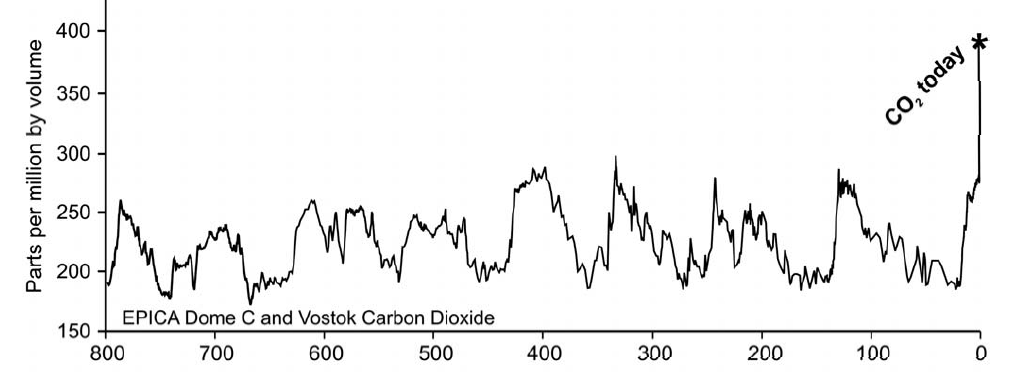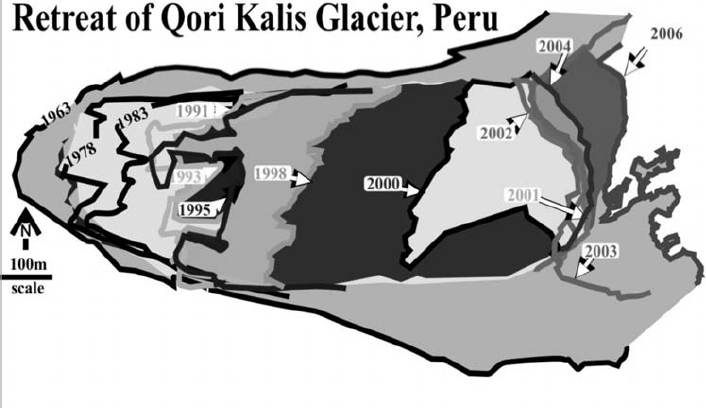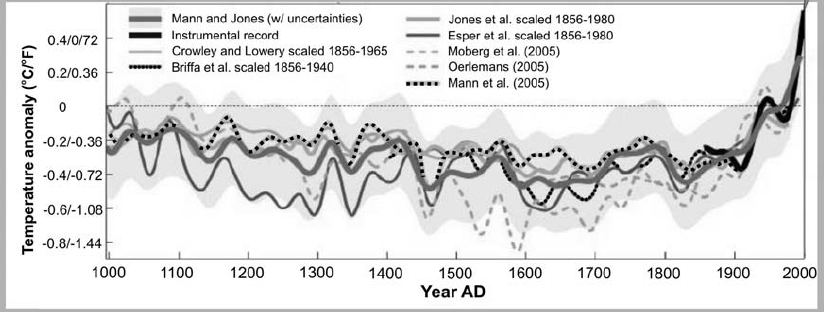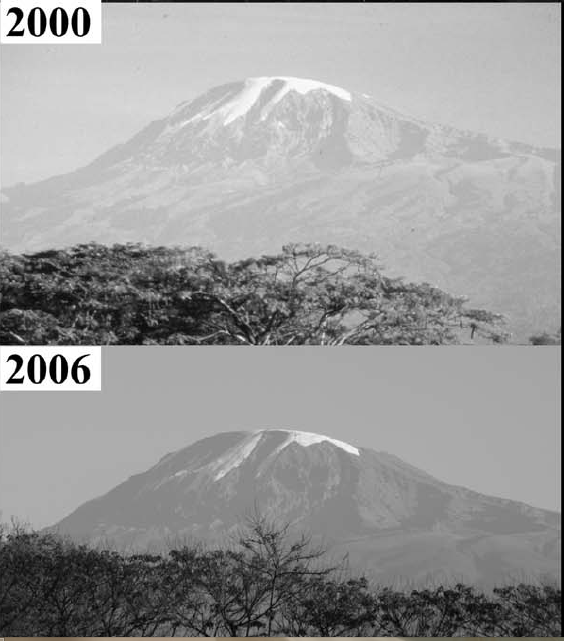Introduction
Many environmentalists, scientists and researchers have been concerned about the overall changes of the earth’s climate. Many people believe that the current changes in the global climate are a result of global warming. Specifically, the planet is getting warm at a dramatic rate. Clime change is essentially the long-term weather trends and patterns that are becoming different with time.
In many areas worldwide, the current temperatures are much higher in comparison to the eighteenth century (Abbot et al. 112). Climate change is currently happening. Even though it may be difficult to reverse the devastating effects of climate change, it is still possible to slow down the current trend.
Literature Review
Many scholars like Marthez (127) believe that the current changes in the climate are a result of human activities and natural events. Human activities that are attributed to these changes include burning fossil fuels, industrial pollutants, urbanization, and the deforestation of forests. These human activities have negatively affected the climate in the end.
On the other hand, the natural processes that have led to climate change include changes in the earth’s orbit around the sun, volcanic eruptions and changes in the solar output (Molnia 28). In this paper, climate change is a consequence of human activities. These activities have led to an increase in the overall global climate. Specifically, the greenhouse gas phenomenon arises from the continuous trapping of thermal emissions in the earth’s atmosphere.
Even though a large number of people in the scientific community believe that global warming and climate change is indeed occurring, others dispute this belief. According to Archer and Brovkin (286), there is a lack of enough evidence to consider global warming as a current occurrence.
Specifically, they believe that the current concern about global warming has been made severe by the media. It is often the norm for the media to detail news about global warming, and the impact it has in various regions of the world. Despite this, other scientists have been able to provide enough proof that vehicle emissions, industrial activities, and technological pollutions are to blame for the current rise in global temperatures (Matsuo and Heki 32).
The greenhouse effect arises from human activities. The atmosphere is composed of various gases. These include water vapor, carbon dioxide, and long-wave radiation that originate from the earth’s surface. Moreover, short-wave radiation comes into the earth’s atmosphere and gets absorbed on the surface of the earth (Bradley et al. 1755).
This radiation is then emitted as terrestrial longwave radiation. The gases in the atmosphere ally an integral role in absorbing this emission and maintain it in the atmosphere. This process increases the earth’s temperature. Essentially this process is referred to as the greenhouse effect. Issues can also arise. According to Abbot et al. (105), human activities have led to the emission of additional gases into the atmosphere.
The original gases, comprised of water vapor and carbon dioxide, maintain the earth’s temperature at a suitable level. Moreover, the carbon dioxide is absorbed led by trees, and this is a process that ensures its balance within the atmosphere. Human activities produce other gases such as aerosols, chloroform carbons, ozone, carbon dioxide, and methane. It leads to an increase in the longwave radiation. In the process, the global temperatures also increase.
These trace gases are to blame for global warming and have significantly affected the earth’s atmosphere. For instance, the chloroforms tend to destroy the earth’s atmosphere. In the end, this reduces the ability of the earth’s atmosphere to protect humanity from harmful radiation from space (Archer and Brovkin 285).
Records made by scholars such as Marthez (178) confirm that the atmosphere is getting warm at a tremendous rate. It involves data collected in locations such as Alaska and Miami where the reading are much higher than initially recorded. In the 1950s, the records gathered in Miami show that the average condensation of carbon dioxide in the atmosphere was about 300 parts per million (ppm).
The pre-industrial levels of carbon dioxide are often believed to have been about 270ppm. In the 1990s, the number rose to 350pp (Marthez 79). It shows that there has been a trend of increasing carbon dioxide level in the earth’s atmosphere. Even though carbon dioxide can have devastating effects, some scholars like Matsuo and Hekin (33) believe that it can lead to a positive impact.
Specifically, increasing levels of carbon dioxide could cool areas that are at altitudes of about 28km to 85km. It occurs since the atmosphere is cooled by thermal radiation that is emitted to space by carbon dioxide. These areas will witness an increase in ozone, which would stimulate the growth of vegetation.
Scholars like Marthez (142) believe that the rise of carbon dioxide levels in the atmosphere will lead to an increase in temperatures. It arises from the ability of carbon dioxide to absorb the infrared radiation. This vital aspect leads to warming of the planet.
Methodology
The methodology will also involve several approaches to collect data. The first will include a literature search. It will entail a Google search to collect information about global warming (Archer and Brovkin 289). The second approach will involve research journals on climate change and global warming. It will also consider reports from international scientific organizations.
Finally, the methodology to determine the extent of global warming will entail both qualitative and quantitative analysis. The qualitative analysis will look at the amount of carbon dioxide in the atmosphere. This critical element leads to global warming and affects the temperature of the earth.
Data records will comprise a collection of data in two phases. The first will consider data that was collected in 1920 to 1940. It will be compared to data that was collected from 2000 to 2015. The information will detail how much warmer the planet has become, and the concentration levels of carbon dioxide in the atmosphere (Abbot et al. 77).
Data Analysis
The data collected shows that the global average temperatures are on the increase. Currently, the data shows that the rise is about 2 to 3 degrees Celsius. When a comparison is made between the 1950s and the twenty-first century, the data shows that the global temperatures have increased at an alarming rate.
The trend is not reversible despite many policies to counter global warming (Abbot et al. 58). The data shows that the environmental policies applied by many countries to limit the increase in global temperatures, global warming is still on the increase.
The data also shows that the world’s mountain glaciers have about 5% of the world’s ice cover. They provide vital information about the impact of global warming, and the changes in warmth over an extended period (Matsuo and Heki 35). Data, especially from mountains such as Mt. Kilimanjaro, are showing that the ice caps have been reducing over the years.
Thinning of glaciers in the polar regions of the earth is a sign of climate change. Moreover, their surface area to volume ratio is more, and they respond to changes in global temperatures more quickly (Molnia 45). Climate change is manifested in the form of rising temperatures that cause glaciers to melt.





Results
The data collected has shown that temperatures have been on the increase. The past ten years have been the warmest as compared to the past four centuries. Moreover, 2015 will become the warmest year in history. Climate change is occurring at a tremendous rate even though few people do not support this conclusion. The data also show that a significant number of scientists believe global warming is real. Its effects are already felt worldwide (Abbot et al. 199).
The results show that there is a dramatic increase in global temperatures. It has led to melting of the ice caps. In the process, the sea levels are rising. Many coastal regions and low-lying continental regions are already facing flooding. It has become a common occurrence in many countries. The ice caps in many mountains such as Mt. Kilimanjaro are also reducing (Molnia 27). The reduction details a situation where global warming will lead to dire consequences for the planet in the end.
The data predicts that the global climate will increase by about 3 degrees Celsius by the end of the century. It means that the earth will be warmer than it was about 3 million years ago (Bradley et al. 1756; Abbot et al. 112). The effect of the current rise in global temperatures is hard to predict. Many changes are already occurring, and this means that there would be a severe pressure on civilization if global warming continues.
Data has also been collected from satellite imagery of the earth’s surface. It includes important data such as tree rings, glacier lengths, ice cores, corals, and historical records. Each data source has shown that the average temperatures, especially in the northern hemisphere have been on the increases.
The data also shows that the western, especially the United States has increased in warmth at a faster rate in comparison to the eastern part (Archer and Brovkin 293). Moreover, the winters are warming faster when compared to the summer. The northern pole is experiencing drastic changes in temperatures.
Satellite image and terrestrial photogrammetric maps have shown that many mountains, such as Mt. Kilimanjaro are losing their glacier covering at a tremendous rate. Specifically, since 1912, the highest crater on Mt. Kilimanjaro has lost about 80% of its ice cover. At the current rate, the mountain will lose its glaciers soon. Furthermore, a study of 60 ice glaciers in Alaska also shows a similar trend. The entire glacier covering is retreating. It is the same pattern for all glaciers worldwide (Marthez 238).
Discussion
Catastrophic events
Many catastrophic events have occurred due to climate change. Global warming is occurring at a tremendous rate despite policies and other strategies to deal with climate change. Some of the catastrophic events that have occurred include prolonged drought in Australia, India, China, and Pakistan (Matsuo and Heki 34). Others include hurricanes in the USA and massive flooding in India and Pakistan.
These events are attributed to global warming. In the twenty-first century, the number of climatic events has increased tremendously in comparison to previous centuries. Specifically, they occur four times more frequently. Moreover, they have led to the loss of many lives. From 2000 to 2005, averages of 25 climatic disasters have been reported per year (Molnia 35). Essentially, it means that the current geological changes will continue to cause destruction and loss of lives unless the world takes steps to mitigate global warming.
Global warming has also led to a rise in the sea levels. It arises from the melting glaciers at the Arctic and Antarctic. The increase in temperature means that water from the glaciers ends up in the seas (Bradley et al. 1755). The increase in sea levels is also is due thermal expansion.
Water tends to expand as it gains temperature. Glaciers are icecaps release a lot of water, which leads to a rise in the sea level. An increase in the rise in the sea level will lead to reduced coastlines and eventual destruction of seaside infrastructure and life (Archer and Brovkin 291). Low-lying continental regions will be affected by the easing sea levels. It includes countries such as the Netherlands and Bangladesh.
These areas are experiencing more flooding than before. Furthermore, many small island nations are on the verge of extinction. Rising sea levels are submerging islands, such as the receding Indonesia (Matsuo and Heki 33). The Maldives is also an island at risk of destruction (Molnia 39). It has led to an announcement by the county’s leadership that they are thinking of moving its people to other countries such as Sri Lanka, Australia, and India to avoid problems future.
Solution
The effects of rising global temperatures are already occurring. Currently, it is impossible to fix the current climatic changes. Many countries, especially China and the USA, contribute tremendously to the current increasing rate of global warming. The issue will continue being severe unless strict measures are put in place to control and prevent global warming.
Industrialized countries play an integral role in global warming (Molnia 42). The use of green energy has been a common issue in many media houses. Increased use of green energy is often seen as the best way to deal with global warming. It has not been effective as many countries have been unable to establish policies to encourage the use of green energy (Bradley et al. 1755).
The current trends in the automotive industry could prove beneficial in dealing with global warming. Even though this could slow down the emission of dangerous gases in the atmosphere, it will not be effective unless all countries take part in making changes. Many companies are beginning to produce electric cars that have zero emissions (Archer and Brovkin 295).
It is impossible to stop climate change, as many people believe that abrupt climate change is possible. Even though many strategies have been put in place to reduce the rising global temperatures, they will not be effective at the end (Molnia 48). Drastic weather changes like cold and wet climate have been experienced in the past. The data is obtained from organic records that are revealed after 5000 years as the glaciers are receding. Organic materials that date to 5200 years ago have been found frozen in glaciers.
The increase global temperatures mean that there will be drier forests in many regions. Furthermore, forest fires will be on the increase, which will add to the carbon dioxide in the atmosphere. Ash from the forest fires will also account for the rise in temperatures. It is a cyclic event with forest fires adding to the current conditions.
The higher global temperatures mean that there will be an increase in melting ice, which exposes darker areas such as rock, dirt, and water. It creates an additional surface to reflect less solar energy in comparison to ice. In essence, it leads to higher global temperatures, leading to melting ice. The tundra permafrost will also melt.
It leads to an increase in the carbon dioxide released into the atmosphere. The rotting organic matter also adds to the issue as they release more carbon dioxide. This process is a positive feedback, which increases the rate of change to point where restoring the equilibrium condition would be impossible (Marthez 193).
Essentially, it is not too late to fix global warming. It will require intensive policy changes, especially concerning human activity. The current conditions can be compared to a boulder rolling down a hill. It would be a remedial to build the boulder, but once the boulder reaches a certain velocity, it would be impossible to stop it.
It is unknown whether global warming has a tipping point or we are at a tipping point. Despite this, the acceleration is global warming means serious issues around the globe. The present atmospheric composition of CO2 would lead to increased temperatures for three decades later after greenhouse gases are tamed. Once methane is emitted into the atmosphere, it remains for about 7 to 11 years. Carbon dioxide remains in place for about seventy to 110 years. Roughly 20% of the atmospheric CO2 will have an impact on the planet nine millenniums later.
Conclusion
In conclusion, global warming is a major issue. It arises from greenhouse emissions that are attributed to human activity. Many countries have established policies and laws to control or slow down global warming, but it has been ineffective. Many countries, especially the United States which is the largest emitter of greenhouse gases, has done little in solving the current issue besides talking about it.
The data shows that glaciers are thinning out while sea levels are increasing. Many lowland areas, especially those in coastal regions are at risk of disappearing. Moreover, the climate is changing, leading to diverse weather such as flooding and drought. Currently, no technology has solved the global warming issue.
The only viable solution is to change our behavior significantly to slow down global warming. It will allow engineers to develop a device and deploy technological solutions to global warming. Furthermore, the longer the delay in solving the global warming problem, the greater the consequences.
Works Cited
Abbot, John et al. Climate Change: The Facts New York: Stockade Books, 2015. Print.
Archer, David, and Victor Brovkin. “Millennial Atmospheric Lifetime of Anthropogenic CO2.” Climatic Change 90.3 (2008): 283–297. Print.
Bradley, S. Raymond, Mathias Vuille, Henry Diaz, and Walter Vergara. “Threats to Water Supplies in the Tropical Andes.” Science 312.5781 (2006): 1755–1756. Print.
Marthez, Edmond A. Climate Change: The Science of Global Warming and our Energy Future Washington DC: Columbia University Press, 2009. Print.
Matsuo, Koji, and Kosuke Heki. “Time-Variable Ice Loss in Asian High Mountains from Satellite Gravimetry.” Earth and Planetary Science Letters 290 (2010): 30-36. Print.
Molnia, F. Bruce. “Late Nineteenth to Early Twenty-First Century Behavior of Alaskan Glaciers as Indicators of Changing Regional Climate.” Global and Planetary Change 56.3 (2007): 23–56. Print.